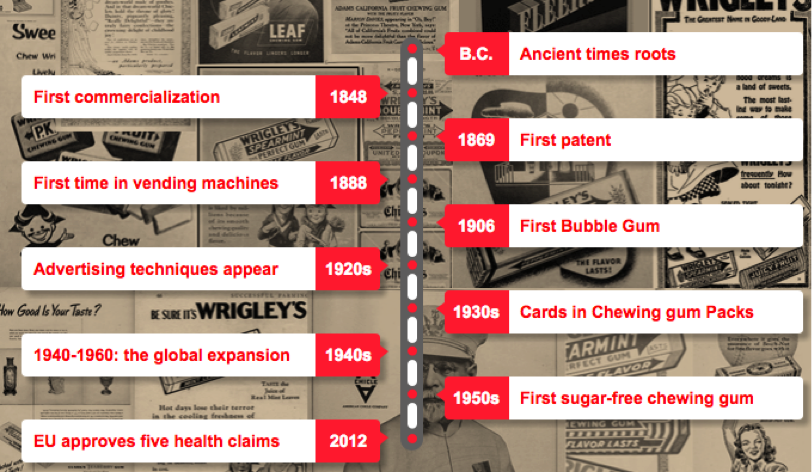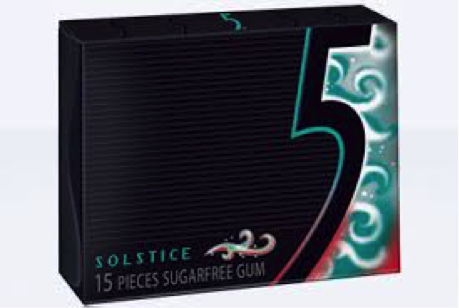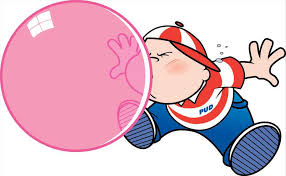When you really think about it, chewing gum is a very odd invention. We voluntarily and consistently chews to chew on a flavored gum with no intention of swallowing or gaining any nutritive value. Why do we partake in such behavior? When did it start? And why do we continue? Could there be some added benefit to our compulsion to chew?
Gum – origins?
We have been chewing gum for quite some time, but it did not start out as the product you might keep in your pocket today. Historically, gum consisted of elements like tree resin or sap. Ancient peoples chewed gum for a number of reasons including enjoyment, teeth cleaning, and fresh breath, just like we do today. Specifically chicle, a resin from the sapodilla tree, retained its flavor well and played a role in popularizing what has now become chewing gum.
In the process of researching chewing gum, I had the opportunity to speak with IFTSA Immediate Past President, Amy DeJong. DeJong, a PhD student researching chewing gum, says chicle from trees is rarely, if ever, used in modern gum formulations because it is not very sustainable and can be quite variable. Companies now use synthetic gum base, because it is more sustainable, easier to work with, and brings less food safety concerns, like insects or tree particulates contaminating chicle during harvest. Modern day chewing gum, though, is not as sustainable as DeJong would wish, saying that it would be great if we could figure out how gum would degrade if disposed of inappropriately on the street, yet not dissolve during chewing.

http://www.gumassociation.org/index.cfm/facts-figures/the-story-of-gum/
The first commercial gum was created by John B. Curtis in 1848 and called State of Maine Spruce gum.1 Fun fact: the first commercialized gum was pink! Why? Coincidence — pink happened to be the only color Curtis had at the time. However, the first patented chewing gum did not come along until a little over 20 years later in 1869. Ironically, it was developed by dentist William Semple of Mount Vernon, OH.. William Wrigley Jr. was the first to actually advertise commercial chewing gum in 1920’s, which helped make Wrigley’s spearmint and Juicy Fruit the mega-popular brands they are today.

http://www.timepassagesnostalgia.com/&pm=0&searchkeywords=Game+Chewing+Gum&sin=g990
Now, How is gum made?
Gum is formed using four main ingredients: a gum base, sweetener, flavor, and color.2 The following steps are the basic process of how gum is made today.
- Gum base ingredients are melted and filtered
- Sweeteners and flavors are added until mix forms into dough
- Extruders blend, smooth and form the gum
- Gum is formed into sticks or molded into shapes
- Gum is sprinkled with powders or other substances to prevent from sticking to packaging
- Gum is cooled for up to 48 hours in order to properly set
- Gum is wrapped and packaged, ensuring fresh delivery!
A gum base and something to chew on is exciting, but not quite as epic as flavored gum.
To this day, spearmint, peppermint, and cinnamon are considered the most popular gum flavors. However, a quick perusal of the candy aisle or grocery check out line will yield many other flavors to choose from including fruit flavors and variations of mint. Some brands focus solely on mint variations and title these flavors something unique or representative of a feeling or experience. Ever chewed flavors like “Ascent,” or “Solstice”? Other innovative flavors include rainbow ice and birthday cake. The possibilities are endless…!


DeJong also commented that lasting flavor and sweet sensations are some of the chewing gum industry’s largest challenges. She says companies are constantly trying to improve flavor release; often gum seems to lose its flavor, however, flavor compounds are often still there stuck in the gum base, unreleased.
With the excitement of such innovative flavors, it might be hard to imagine that there are additional benefits to that delicious chewy treat. Chewing gum boasts functional benefits associated with some of its flavors as well as the actual chewing motion.
For example, research has found that chewing gum enhanced performance on standardized tests for working and episodic memory but not attention.3 It is suggested the act of chewing aids memory via action of insulin stimulated from chewing, making the body anticipate a ‘nutritional load.’ Authors hypothesized that the more metabolically active cells would improve glucose uptake, since glucose has been found to improve memory recall.4 Additionally, theories also suggested increased bouts of oxygenated blood reaching the brain obtained through chewing helped facilitate memory improvement.5
Chewing gum also has been found to moderate stress in multiple ways. One study found increased alertness during multitasking.6 Others found reduced levels of cortisol (i.e., a hormone associated with stress) during stressful tasks, in addition to lower self-rated reports of stress when chewing gum.7 More than one theory on the mechanism of gum-related stress reduction exists, including effects on vasodilation. It has been suggested short-term stress reduces vasodilation and with chewing gum’s effect on cerebral blood flow, may counter this stress reaction, helping to minimize blood flow reduction. It has also been suggested that gum-related stress reduction may be due in part to chewing gum’s ability to facilitate better task performance, indirectly lowering stress levels9. More research is needed to be conclusive on the exact mechanisms and outcomes of chewing gum. It also complicates studies when positive effects cannot be differentiated from the action of chewing versus the presence of particular flavor profiles, such as mint.8
With all these potential benefits and mouth-watering flavors, why not choose to chew?

http://www.clipartkid.com/bubble-gum-bubble-cliparts/
References
- http://www.gumassociation.org/index.cfm/facts-figures/the-story-of-gum/
- http://www.gumassociation.org/index.cfm/science-technology/#1
- Scholey A (2004) Chewing gum and cognitive performance: a case of a functional food with function but no food?. Appetite 43:215-216
- Stephens, R., & Tunney, R. J. (2004). Role of glucose in chewing gum-related facilitation of cognitive function. Appetite, doi: 10.1016/ j.appet.2004.07.006, this issue
- Onozuka, M., Fujita, M., Watanabe, K., Hirano, Y., Niwa, M., Nishiyama, K. and Saito, S. (2002). Mapping brain region activity during chewing: A Functional Magnetic Resonance Imaging study. Journal of Dental Research, 81(11), 743-746
- Scholey A, Haskell C, Robertson B, Kennedy D, Milne A, Wetherell M (2009) Chewing gum alleviates negative mood and reduces cortisol during acute laboratory psychological stress. Physiol Behav 97:304-312
- Scholey A, Haskell C, Robertson B, Kennedy D, Milne A, Wetherell M (2009) Chewing gum alleviates negative mood and reduces cortisol during acute laboratory psychological stress. Physiol Behav 97:304-312
- Norrish MIK, Dwyer KL (2005) Preliminary investigation of the effect of peppermint oil on an objective measure of daytime sleepiness. International Journal of Psychophysiology 55:291-298
- Johnson, Andrew J., et al. “Chewing gum moderates multi-task induced shifts in stress, mood, and alertness. A re-examination.” Appetite2 (2011): 408-411.






Leave a Reply